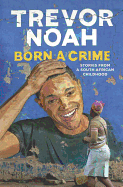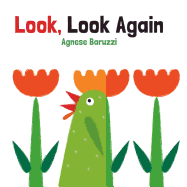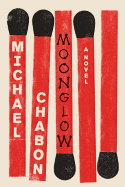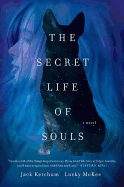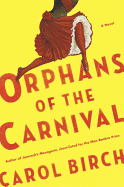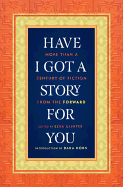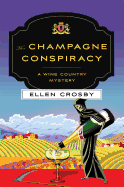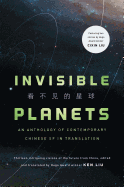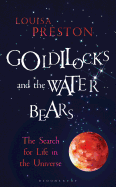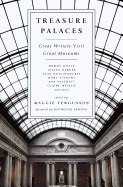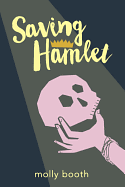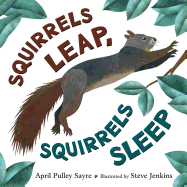Friday, November 25, 2016
One of the most tragic and seminal events in U.S. history--the attack on Pearl Harbor--took place 75 years ago this December 7. The event led the country into World War II and began an exceedingly bitter, bloody series of battles in the Pacific that lasted for four years and claimed millions of lives. It should come as no surprise that the attack has resulted in perhaps thousands of memoirs, histories, analyses and even historical fiction. We'd like to highlight a few; for a fuller listing, click here.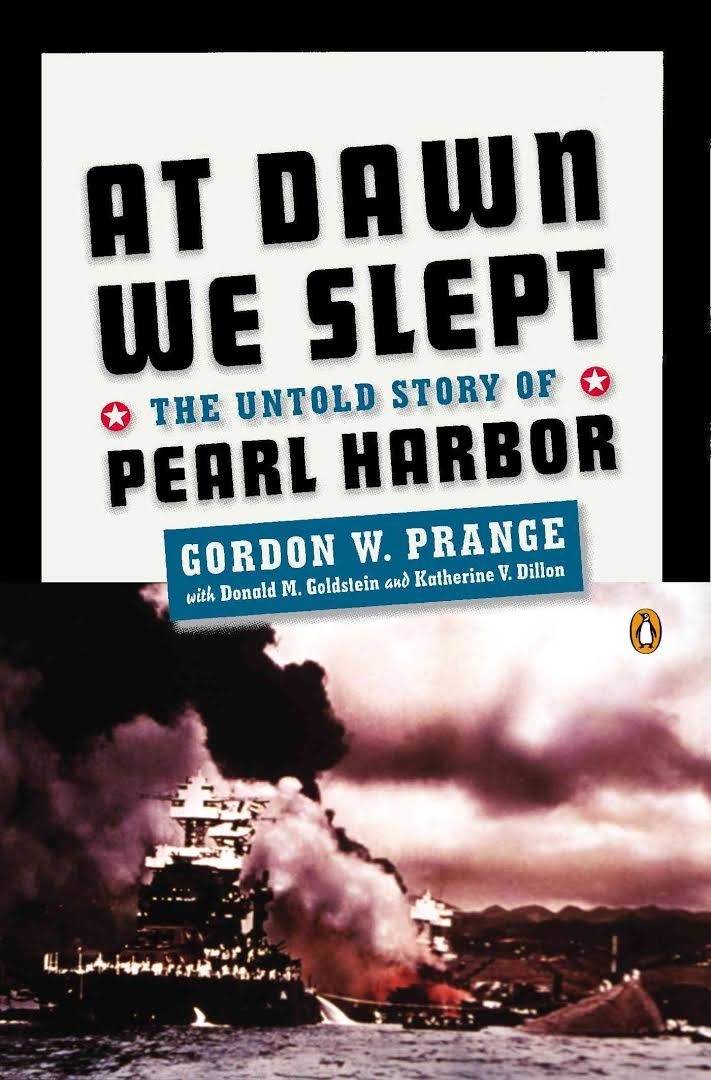 At Dawn We Slept: The Untold Story of Pearl Harbor by Gordon W. Prange (Penguin Books, $25). Gordon W. Prange was a longtime University of Maryland history professor and chief historian on Gen. Douglas MacArthur's staff. His 1963 article "Tora! Tora! Tora!"became the basis for the 1970 film and was expanded, after Prange's death, into At Dawn We Slept, a classic account of the attack from both sides, using interviews Prange conducted during the military occupation of Japan. In 2001, Penguin Books released a new edition marking the 60th anniversary of Pearl Harbor.
At Dawn We Slept: The Untold Story of Pearl Harbor by Gordon W. Prange (Penguin Books, $25). Gordon W. Prange was a longtime University of Maryland history professor and chief historian on Gen. Douglas MacArthur's staff. His 1963 article "Tora! Tora! Tora!"became the basis for the 1970 film and was expanded, after Prange's death, into At Dawn We Slept, a classic account of the attack from both sides, using interviews Prange conducted during the military occupation of Japan. In 2001, Penguin Books released a new edition marking the 60th anniversary of Pearl Harbor.
All the Gallant Men: An American Sailor's Firsthand Account of Pearl Harbor by Donald Stratton and Ken Gire (Morrow, $25.99). This is the first and only memoir written by a survivor of the USS Arizona, the Pearl Harbor battleship whose powder magazine exploded, killing 1,177 crew members. Seaman First Class Donald Stratton survived with burns over two-thirds of his body. At age 94, he shares his harrowing story for the first time.
Countdown to Pearl Harbor: The Twelve Days to the Attack by Steve Twomey (Simon & Schuster, $30). The final days before the attack on Pearl Harbor were a whirlwind of diplomacy, deception and military maneuvering. In Countdown to Pearl Harbor, Pulitzer Prize-winning journalist Twomey scrutinizes the many warnings, most ignored, of the Japanese arrival at Oahu, and the figures who played important roles in these final days of American peace.
Moonglow
by Michael Chabon
In Moonglow, Pulitzer Prize-winning novelist Michael Chabon (The Amazing Adventures of Kavalier & Clay) takes a beguiling journey along the ever-shifting boundary between truth and fiction in the family stories passed down--or concealed--from one generation to the next.
So many incidents are stuffed into Chabon's novel that it defies easy summary. On one level, it's the episodic account of the narrator conversing for 10 days with his dying maternal grandfather. To describe that life--which included tracking down the document cache of Nazi (and postwar United States) rocket scientist Wernher von Braun and a two-year jail term for assaulting his boss, who fired him to hire accused Soviet spy Alger Hiss in 1957--as colorful is an understatement. But the novel is also the sensitive account of the narrator's maternal grandmother's escape from occupied France as a pregnant teenager, and her lifelong battle with mental illness likely induced by that trauma. Moonglow ultimately succeeds in blending these two narratives because Chabon is so adept at pure storytelling.
With an author's note that refers to the book as a "memoir" and confesses that he has "stuck to facts except when facts refused to conform with memory, narrative purpose, or the truth as I prefer to understand it," Moonglow may leave critics and readers guessing about its provenance. But literary parlor games aside, it's a reminder of the tragic fact that too many engrossing family stories either are not shared with younger generations or, if they are, they're unappreciated by their listeners. Chabon gently reminds readers that we should seek out or pass on those stories before it's too late. --Harvey Freedenberg, attorney and freelance reviewer
Discover: Michael Chabon's eighth novel is the picaresque story of an ordinary man's extraordinary life.
The Secret Life of Souls
by Jack Ketchum and Lucky McKee
Eleven-year-old Delia Cross is on the cusp of fame; with the help of her slightly creepy agent, Roman, and her overly ambitious mother, Pat, she's about to land her first sitcom role. While Delia and Pat are off at auditions and rehearsals, Bart, the father, fritters away the family's money on gadgets and toys (and alcohol), and Robbie, Delia's twin, lurks in his room, mostly ignored in his utter normalness. The family also includes a dog, Caity, with whom Delia shares a special relationship. When tragedy strikes, ruining the girl's chances of sitcom stardom and pushing the family toward financial ruin, it is Caity who comes to Delia's aid--as savior, guardian and friend.
The Secret Life of Souls skirts cliché in the beginning: the parents blinded by their greed and ambition; the overshadowed sibling; the special relationship of a girl and her dog. Jack Ketchum and Lucky McKee's female characters can feel trite at times, especially as Pat Cross drifts thoughtlessly between selfish ambition and motherly love. Tolstoy wrote that all unhappy families are unhappy in their own way, and the Cross family is no exception. As their drama unfolds, The Secret Life of Souls moves beyond cliché and into the distinctive, especially in the unusual--and at times eerie--connection between Delia and Caity. Ketchum and McKee (I'm Not Sam) have imbued every page of their novel with a sense of suspense that will keep readers on their toes from start to finish. --Kerry McHugh, blogger at Entomology of a Bookworm
Discover: The Secret Life of Souls explores the unusual relationship between a girl and her dog in a particularly dysfunctional family.
Orphans of the Carnival
by Carol Birch
Oddities of nature have always fascinated humans, and Julia Pastrana, the main character in Carol Birch's Orphans of the Carnival, is no exception. Born in the early 1800s in Mexico, with an excessive amount of body and facial hair and wide, pronounced lips, Pastrana was touted as the "bear woman." She appeared all over the United States and Europe in her own show; she sang and danced to the delight and horror of her audiences. Still, Pastrana had the same desires and wants as other women: love, companionship, a home and children. But she was a freak and hardly anyone could contemplate falling in love or making love with her. Until one man did.
Birch (Jamrach's Menagerie) has taken the true story of Pastrana and expertly fictionalized it. She has captured the desires and longings of a young woman who was trapped in a body that provided her with a steady income while repulsing many around her. Birch has also done a good job of depicting Theo Lent, Pastrana's manager and husband, who fought an inner battle that eventually drove him mad. Woven through this main thread is another, offbeat story of a woman who collects odd rubbish whose significance doesn't become apparent until the end. Orphans of the Carnival is a slow-moving, yet gripping dive into the complexity and meaning of humanity and human relationships, made all the more powerful by being based on true events. --Lee E. Cart, freelance writer and book reviewer
Discover: An intriguing blend of fact and fiction, this book tells the story of Julia Pastrana, the "bear woman," who entertained the world during the mid-1800s.
Have I Got a Story for You: More Than a Century of Fiction from the Forward
by Ezra Glinter, editor
Have I Got a Story for You is a fascinating and delightful collection of fiction from the venerable Yiddish newspaper the Forward. Few Yiddish writers still enjoy broad readership, yet their work speaks to a modern condition: that of the immigrant and the outsider. For more than a century, this anthology reminds us, the Forward, now published in English, too, has given voice to American Jews.
The anthology is sectioned thematically. "Immigration and Its Discontents" dives straight into issues of integration; stories by Sarah Hamer-Jacklyn and B. Kovner--whose character Yente became eponymous for the neighborhood busybody--are standouts. "Modern Times" wrestles with changing social and sexual mores. In "World on Fire," writers including Sholem Asch and Israel Joshua Singer confront the horrors of two world wars. Conspicuously absent are stories of the Holocaust, which, editor Ezra Glinter suggests, was too great and too recent a trauma to be processed as fiction. Nostalgia drives the narrative in "The Old Country." There is a story by the great Isaac Bashevis Singer here, and Kadya Molodowsky and Chaim Grade are wonderful (re)discoveries. The final section, "New Horizons," reflects the diverse styles of contemporary writers working in the last few decades.
With a few exceptions, the fiction contains brief slices of life, emphasizing a narrator's voice that is typically rich with humor and pathos. Have I Got a Story for You is a big-hearted anthology reflective of a nation of immigrants. --Zak Nelson, writer and bookseller
Discover: This is an enjoyable introduction to the world of Yiddish fiction and immigrant life, culled from the archives of a quintessentially American newspaper.
Mystery & Thriller
The Champagne Conspiracy
by Ellen Crosby
There's snow in the forecast in rural Virginia, and winemaker Lucie Montgomery is trying her hand at Champagne--or sparkling, as they say in the business. She's also looking forward to Valentine's Day with her boyfriend, Quinn Santori. But when Quinn's estranged cousin, prominent (and ruthless) vintner Gino Tomassi, turns up at Lucie's vineyard one frigid afternoon, he has a story that takes Lucie's thoughts off wine almost entirely. Ellen Crosby returns to the Montgomery Estate Vineyard and its warmhearted cast of small-town characters in her seventh Wine Country mystery, The Champagne Conspiracy.
Under threat from an anonymous blackmailer, Gino is worried about a scandal that may jeopardize both his bank account and his reputation. When he asks Lucie and Quinn for help digging up old family secrets, all three are shocked to discover the tangled connections between Gino's grandfather's first wife, Zara, Lucie's great-great-aunt and namesake, Lucy (known as "Lucky"), and President Warren Harding--who died in a San Francisco hotel one day before Zara did. As the damning evidence mounts up, so does the danger to Lucie and Quinn, who must identify the blackmailer before he or she silences them all.
Crosby (The Sauvignon Secret) keeps the plot flowing like the wine she writes about, with likable characters, inclement winter weather and enough plot twists to keep readers guessing. For mystery buffs who enjoy wine, jazz and a juicy scandal or two, The Champagne Conspiracy is a light, satisfying treat. Cheers! --Katie Noah Gibson, blogger at Cakes, Tea and Dreams
Discover: Ellen Crosby's seventh Wine Country mystery mixes Champagne, romance and blackmail at a Virginia vineyard.
Science Fiction & Fantasy
Invisible Planets: Contemporary Chinese Science Fiction in Translation
by Ken Liu, editor and translator
Editor and author Ken Liu (The Grace of Kings) cautions Western readers to avoid the temptation of interpreting the stories in the anthology Invisible Planets as mere metaphors for contemporary Chinese political discourse. Liu's translations of 13 short stories and three essays on Chinese science fiction are not to be taken as representative of all China has to offer the field of genre fiction, either.
Instead, Invisible Planets delivers a fascinating glimpse into the work of seven astute practitioners of science fiction writing. Liu Cixin, nine-time winner of the Chinese Galaxy award and recipient of the 2015 Hugo Award for best novel, contributes two stories and an essay on the relatively new acceptance of SF as a literary force in China. One of his stories, "Taking Care of God," is a vivid parable exploring the origin of humanity, as well as its current self-centered state.
Xia Jia, who holds China's first Ph.D. in science fiction, contributes three short stories, including the elegiac and haunting tale of a world left to machines in "Night Journey of the Dragon-Horse," based on actual mechanical sculptures that exist today. Her versatility and mastery shines forth with each shimmering world built, each short work bursting with speculative intelligence.
Ken Liu translates the array of radiant stories and insights in Invisible Planets, and provides short author introductions and essays to help Western readers access work they might not otherwise consider. These powerful stories, written with superb skill and full of riveting concepts, have universal appeal. --Rob LeFebvre, freelance writer and editor
Discover: Invisible Planets provides a first-rate exploration of contemporary Chinese science fiction.
Biography & Memoir
Born a Crime: Stories from a South African Childhood
by Trevor Noah
Before an illustrious international comedy career and a job hosting the Daily Show, Trevor Noah was an awkward kid living through apartheid. His memoir, Born a Crime: Stories from a South African Childhood, is both the story of his upbringing and a commentary on the political machinery that enforced institutionalized racism.
Similar to the way Noah's late-night program operates, Born a Crime attacks controversial and divisive issues with comedy. As if his punchlines were the tip of a sharp scalpel, he dissects the inner workings of a racist bureaucracy by exposing the inherent absurdity in its policies. But unlike the show, the humor here is personal. With a collection of anecdotes about life in South Africa, Noah juxtaposes his own youthful ignorance and innocence with the adult and oppressive circumstances in which he was raised. For instance, he shows how silly racism can be when he writes about realizing too late that his prom date didn't speak his language due to governmental policies dividing the country along tribal lines.
But beyond the wit of Noah's storytelling style lies a darker truth about the nature of the modern world. Born to a white man and a black woman, Noah's very existence was illegal in the eyes of his government. Throughout his memoir, Noah subtly asks his readers whether or not they can find any parallels in modern American life. None of this happened in ancient history, he seems to remind us; he is just in his early 30s and is a survivor of state-sponsored bigotry. --Josh Potter
Discover: The popular host of the Daily Show uses comedy to tell what it was like growing up under apartheid in South Africa.
History
Bellevue: Three Centuries of Medicine and Mayhem at America's Most Storied Hospital
by David Oshinsky
Bellevue in New York City is one of the oldest and most famous names in United States hospitals, known for housing violent criminals and mental health patients, the homeless and sufferers of rare and exotic diseases. The incredible, multi-layered history told by David Oshinsky in Bellevue: Three Centuries of Medicine and Mayhem at America's Most Storied Hospital covers medical and general history both national and global. This thorough narrative is wide-ranging and endlessly gripping.
The institution began in 1736 as an almshouse, where the indigent were housed and given rudimentary medical care. From these earliest days, "Bel-Vue" had a reputation for dealing with society's unwanted. Before modern considerations of medical ethics, this often meant experimenting on Bellevue's impoverished patients and their diverse range of ailments. Nevertheless, the hospital became central over the years in battling the yellow fever epidemic of the 1790s, the "Great Influenza" of the 1910s, the AIDS crisis of the 1980s, the September 11 attacks and Superstorm Sandy.
Bellevue's beauty and staggering scope lies in these historic, social and interdisciplinary connections. Bellevue's physicians have traveled the world and played roles in the scientific advances that have shaped modern medicine. Oshinsky (Pulitzer Prize-winner for Polio: An American Story) generally adheres to an impersonal, journalistic style, but his moving portrayal can't hide his admiration for this longstanding institution. Bellevue is that rare, page-turning history: engaging, smart, clearly written and of broad general interest. --Julia Jenkins, librarian and blogger at pagesofjulia
Discover: This fascinating history of New York City's famous public hospital provides a microcosm of national and worldwide medical history.
Science
Goldilocks and the Water Bears: The Search for Life in the Universe
by Louisa Preston
During a press conference in 2015, NASA chief scientist Ellen Stofan said definitive evidence of extraterrestrial life would probably be discovered within the next 20 to 30 years, with strong indications of life coming in as soon as a single decade. In the fairly recent past, this bold prediction might have been dismissed as starry-eyed wishful thinking, but a flood of a new data about planets outside our solar system, combined with rapidly improving observation technology, means Stofan's predictions are plausible.
Astrobiologist and planetary geologist Louisa Preston is on the cutting edge of the search for life on other worlds. In Goldilocks and the Water Bears: The Search for Life in the Universe, Preston surveys the emerging field of astrobiology with scholarly depth and layman accessibility. The title refers to the Goldilocks Zone around stars, where temperatures are neither too hot nor too cold for liquid water, and Water Bears, an extremophile form of microscopic life whose extraordinary survival capabilities have greatly broadened the possible environmental ranges of life in space.
Preston builds her survey on the foundations of her field--the basics of life on Earth--and expands outward from known terrestrial biology to the prospects for extraterrestrial life. Likewise, she uses concrete observations from within our solar system to speculate on otherworldly environs, resulting in a fascinating and thoroughly fact-based account of where E.T. might be hiding. Goldilocks and the Water Bears brings a lofty, sometimes exaggerated topic down to Earth in an enjoyable way. --Tobias Mutter, freelance reviewer
Discover: An astrobiologist gives an accessible survey of the search for extraterrestrial life.
Art & Photography
Treasure Palaces: Great Writers Visit Great Museums
by Maggie Fergusson, editor
Collected from a series published in Intelligent Life magazine, Treasure Palaces: Great Writers Visit Great Museums features short essays by 23 writers on the museum of their choice. The assignment, as the collection's editor Maggie Fergusson explains in the preface, was for the writers to weave in a bit of biography to explain their love or distaste for the museum they visited. It is, on the surface, pleasant, not unlike taking a stroll through a museum itself.
But because the essays are by writers and not art critics, an extra interpretive layer has been added to each essay. Instead of deconstructing each painting or each museum the way a critic might, the authors spend the bulk of their essays exploring the nature of art and the way we perceive it. In her essay on the Musée Rodin in Paris, novelist Allison Pearson (I Think I Love You) writes, "Dead people had felt these things; and the living went on feeling them. Rodin's sculptures made that connection for us; they continued to struggle and gasp and yearn and caress beneath their marmoreal skins."
While each essay is written in such a way as to place the reader in the hallowed halls of the world's great museums by describing them in detail, the collection offers so much more. As patrons are wont to do at a museum, one could simply move quickly through these essays. But Treasure Palaces asks the art lover to sit and think for a while. --Josh Potter
Discover: In this collection of essays, great authors offer thoughts and ideas about art and life inspired by their visits to the world's great museums.
Children's & Young Adult
Look, Look Again
by Agnese Baruzzi
Is it an apple or a crocodile? A banana or a mosquito? A flower or a rooster? Look, Look Again is an ingenious counting book for preschoolers. Every spread features text on one side: "There's 1 apple. Or could it be..." with a single image (an apple) on the opposite folded page. Open it up to find that what looked like a green apple is actually the backside of two crocodiles. Tots will be amazed and delighted to discover that things are not always what they seem.
The bold, uncluttered artwork and simple text of prolific Italian author-illustrator Agnese Baruzzi's (The Bot That Scott Built; I'm Going to Eat You!) sturdy square board book will hold the attention of even the youngest audience. Readers are invited to look--and look again--in a variety of ways: "Look, it's 1 donut. Or is it something else?" "That looks like 1 banana. But look closer." "There's 1 tasty carrot. Who's going to eat it?" A red strawberry specked with seeds morphs magically into spotted red birds. A plain yellow lemon opens up to become adorable little chicks. It won't take savvy onlookers long to learn that while the number of objects--all plants and foods--on the unfolded page is always one, the number of critters within the gatefold increases from 1 to 10. This fun, clever and highly interactive board book is a standout. --Emilie Coulter, freelance writer and editor
Discover: One mushroom turns into four toucans and one carrot becomes eight rabbits in Agnese Baruzzi's counting board book that uses folded pages to create enchanting tricks of the eye.
Saving Hamlet
by Molly Booth
Emma Allen is starting her sophomore year of high school and wants a complete change. Last year her family moved to Massachusetts, making her the "weird new freshman." She also quit the soccer team after a social disaster. Emma thinks a super-short "fairy supermodel" haircut and new life as a theater tech are the solution, but it won't be easy. She's stage managing her school's production of Hamlet, the director cast a first-time actor in the lead, and Emma's best friend, Lulu, is furious that she's playing Ophelia and not Hamlet. Not only that, Emma is dealing with two big life complications: romance and time travel, specifically falling through a stage trapdoor to Shakespeare's Globe Theatre in 1601 London... where they all think she's a boy.
Author Molly Booth was a high-school stage manager herself. Her debut novel, Saving Hamlet, sneaks in some education, like showing how iambic pentameter helps actors learn lines. Mostly it offers a spot-on picture of the theater and how its cozy nest of friendships gets strained by hearts and egos. Emma also experiences some realistic crises as a smart girl who's dipping into the world of dating: "Was I really okay with a guy liking me because I had changed my appearance? Was this Grease or something?" As Emma juggles suitors across time and space and struggles to keep her play afloat, she starts to see herself as a lead instead of a side player in her own life. Saving Hamlet feels like one of Shakespeare's comedies--a few close scrapes along the way, but all in good, gender-bending fun. --Ali Davis, freelance writer and playwright, Los Angeles
Discover: Molly Booth's entertaining debut YA novel is a sweet-natured love sonnet to Shakespeare, the theater and romance itself.
Squirrels Leap, Squirrels Sleep
by April Pulley Sayre, illus. by Steve Jenkins
So many squirrels dash about the cities and forests of North America, it's easy to stop noticing them. The author-illustrator team behind Vulture View and Eat Like a Bear opens readers' eyes to the day-to-day scamperings of these busy rodents in the engaging, rhyming picture book Squirrels Leap, Squirrels Sleep. (Verdict: Squirrels are most adorable when they are asleep.)
The read-aloud rhymes of April Pulley Sayre (Honk, Honk, Goose!; Raindrops Roll) are pleasingly simple: "Squirrels wrestle./ Squirrels leap./ Squirrels climb./ Squirrels sleep." Complementing her crystal-clear descriptions, the clean, cut- and torn-page collage art of Caldecott Honor artist Steve Jenkins (What Do You Do with a Tail Like This?; Mama Built a Little Nest; My First Day; Egg) reflects nonstop squirrel activity in both round spot-art images and dramatic full-bleed spreads. (Watch out for that bird of prey, little guy!) While young readers are learning how important squirrel tails are for balance (or umbrellas), they are asked to consider the bright-eyed creatures more fully: "Squirrels chirp./ Squirrels drink./ Can you guess/ what squirrels think?" (Maybe they are thinking about all those delicious-looking acorns on the endpapers.)
Two spreads reveal an underground view of five buried acorns, then "Seedlings push/ up, up, and out!" The cycle is complete as squirrels climb the mighty oaks. Round and round it goes; the book's opening lines close it as well... a sweet, sleeping squirrel curls up in its nest. Four pages of notes in the back--"Squirrels and Their Trees"--serve up even more food for thought. Children may do a double-take next time a squirrel scampers by. --Karin Snelson, children's & YA editor, Shelf Awareness
Discover: April Pulley Sayre and Caldecott Honor artist Steve Jenkins give the underappreciated squirrel its due in this terrific picture book.


